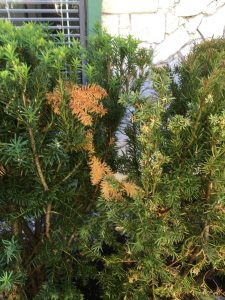This is my favourite myth of all: there is a landscape site or garden with nothing to do on it; it’s that perfect. As an expert in strata (multi-family complex) landscape sites, I find this extremely laughable because landscapes grow and evolve. Depending on the season you’re in, there is always maintenance work to be done.
Two types
I find two types of foremen who confidently assert that there is nothing to do on their sites. One is the outright lazy, disengaged person and the other is too new to know better. Usually, it’s the newly promoted landscape crew leader or foreman who fails to read his landscape.
And this happens more than you think.
Details
Say, it’s July and the site doesn’t want you to mow weekly. Perfect! That means you can take care of details you wouldn’t normally have time for. I love these situations; I embrace them because there is ALWAYS work on site.
Just think details and you’ll start seeing lots of work om site. Below are some examples of what to look for. You will find others in your garden or on your strata site. Learn to read your landscape as you develop what’s called a landscape eye. It takes time so obviously new foremen struggle at first. I often take them on site walks to point out little details and I do it gently. It’s a learning experience. So try it in your garden or on your strata site.
Weeds
There are always weeds on site, especially in lower profile corners. The groundcover in the bed below is full of weeds.
Knotweed
This border patch of Japanese knotweed (Fallopia japonica) is an obvious candidate for removal. As in top removal because the actual weed is difficult to remove permanently. It’s so bad, some green waste facilities don’t even accept it.
Missed pruning debris on top of plants is a common problem so hand-pick the dead brown parts now that they are easy to spot.
Watering is for your clients to do but if you have extra time and you see a complete yew hedge struggling then you can spend some time on it. This hedge is clearly struggling so I reconnected the drip line and hand-watered everything. The drip-line should be left on for hours.
There is no such thing as perfect landscape without any work in it; it’s a myth. Look for details and you will find them. Acquiring good “landscape eye” skills takes time.












